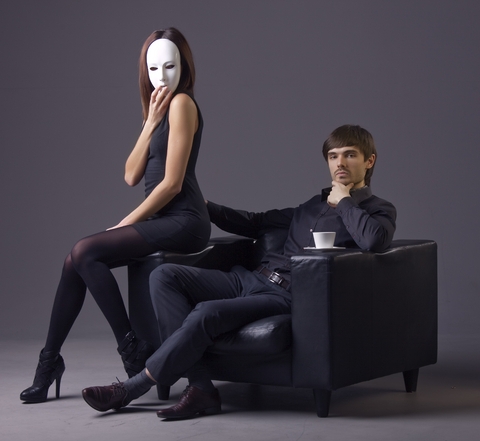Are Men and Women Different?
 Or Are Women and Men the Same?
Or Are Women and Men the Same?
Amanda Bonner (Katherine Hepburn) declares in the movie Adam’s Rib, “There’s no difference between the sexes. Men, women, the same.”
As for me, I didn’t know that men and women were different until 1991. I conceived my daughters, born 1982 and 1986, via autogamy.
Okay. Perhaps I exaggerate.
Chalk it up to my upbringing—Erickson-Piaget-Transactional-Analysis-I’m-Okay-You’re-Okay-Nurture-Trumps-Nature discussions at the table of two socially progressive parents. Added to that, my firstborn, Hillary, had only one request for her third birthday—a shiny red dump truck
(Mind you, this all predates those planetary Mars/Venus pop culture theories.)
At any rate, I came to believe in 1991 that women and men are different. In October of that year, a firestorm swept my community, razing 2,587 buildings and killing 25 people. During the conflagration, women and men reverted to some latent primordial directive. Women gathered the young-uns and spirited them to a safe nest far from the scene, clucking all the while.
Men, on the other hand, ducked under the yellow caution tape back into the fire zone from which they’d been evacuated hours before. Then, under cover of darkness, they slipped through the streets to their homesteads where they performed guard patrol and sprayed their roofs with water.
Different, huh?
After that, I began to wonder if other differences existed.
I bring this up because one of my esteemed writer friends (a male) bewails the fact that the protagonist of my novel Moonlight Dancer does not tread the clearly defined Hero’s Journey a la Joseph Campbell and Christopher Vogler. It’s difficult for her, my protagonist, to march this linear course when she is pulled in multiple directions—namely, a 16th century ghost with an agenda and a lover at odds with the ghost.
But Hero’s Journey is the watchword on everyone’s lips these days. Don’t get me wrong, I love Hero’s Journey novels. The Outsiders, The Giver, The Story of Edgar Sawtelle come to mind—well-wrought, linear and logical. I also believe female protagonists can follow this journey. Jane Eyre fits the profile nicely.
But what if there’s another journey, a more circular Heroine’s Journey? One of my MFA teachers, Louis B. Jones, described such an episodic, circular narrative. He cited To Kill a Mockingbird with Scout’s episodes of fighting injustice, losing innocence, gathering knowledge until the circles—her experiences and Boo’s fate—once again intersect. I think we could include Alice Hoffman, Jodi Picoult, and Luoise Erdrich in this circular scaffolding.
Interestingly, when I challenged my writer friend with this idea, he said I was wrong on multiple levels not the least of which was that Scout was not even the protagonist, Atticus was. Egads! He and I almost came to blows, just as Scout was wont to do.
What do you think? Before you decide, check out this cool male/female story analysis by author Jennifer Crusie—Linear vs. Patterned: A Brief Discussion of Structure. She offers some great insights on the writing process.
Chime in. Don’t be shy. Are there male and female journeys? Are women and men different?
At the conclusion of Adam’s Rib, Katherine Hepburn concedes, “Maybe there is a difference, but it’s a little difference.” Spencer Tracy replies, “Vive la difference!”
2 thoughts on “Are Men and Women Different?”
I attended a session at a writer’s conference early this year where they discussed the Heroines Journey and some differences in what this may entail for women as opposed to men. She pulled her material from author Victoria Lynn Schmidt, her book “45 Master Characters”.
She holds that the feminine version involves much more internal work than the male journey. Men collect tools and allies and set out to achieve some goal whereas women endure a transformation and inner rebirth in theirs.
Maybe the most powerful characters, male or female, involve a bit of both.
~Happy writing,
Kristy
Hi Kristy,
Thanks for the comment. I will definitely check out this book! You could see this idea play out in the novel Cold Mountain with the way the male and female protagonists behaved. My favorite chapter in the whole book was when Ada made a scarecrow–and much of it was internal and revelatory.